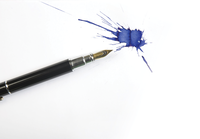Pen & Paper
Using MyPaint and a graphics tablet, you can create or trace drawings with the feel of real pens and brushes. All the necessary tools are included.

victoroancea, 123RF
Using MyPaint and a graphics tablet, you can create or trace drawings with the feel of real pens and brushes. All the necessary tools are included.
MyPaint tries as much as possible to emulate the use of brush and pen in a classic drawing program. Of course, there are limits, but the program provides numerous features that are hard to achieve with analog materials. To fully exploit MyPaint's potential [1], don't operate it with a mouse; instead use a pressure-sensitive input device – typically a graphics tablet.
Modern Linux kernels provide pretty good drive support for Wacom tablets and similar models from other manufacturers, although the latter pale in comparison. The hardware should also be recent enough (maximum five years old) to support the graphics tablet successfully. A first indication of whether Linux supports the device comes with the call to xsetwacom (Listing 1).
The program comes from the xf86-input-wacom package or some similarly named package in another distribution. If the input device is recognized (it may even appear multiple times), "only" the normal configuration is available. I'll talk more about this in the next two sections.
[...]